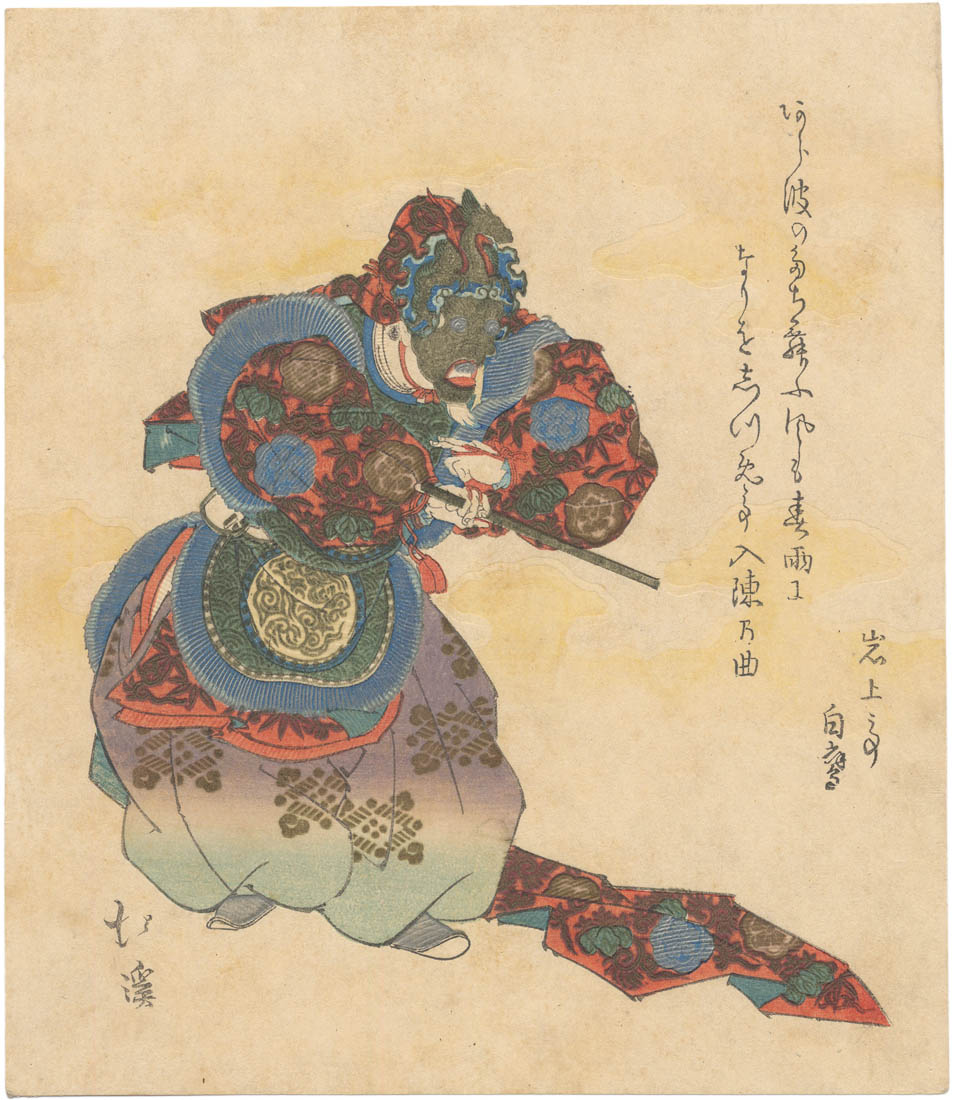
HOKKEI (1780-1850). Danzatore Bugaku
TOTOYA HOKKEI (1780-1850)
A Bugaku dancer wearing the mask of Ryō-ō (The Dragon King).
Bugaku is a ritual dance that was imported to Japan from mainland
Asia in the late 8th century. It was performed at Shintō shrines,
Buddhist temples and the Imperial court.
The Ryō-ō (The Dragon King) was a very popular character and the
most frequently performed Bugaku dance.
In Japanese tradition he is a water deity and he appeared in
ceremonies performed to bring rain during periods of drought.
Woodblock colour print with metallic pigments details
Shikishiban surimono, 21x18,3 cm
Signed: Hokkei
Poem by Ganjōtei Shirataka
Privately published
Probably 1832, year of the dragon
The impression in the Spencer Museum of Art, no. 0000.1422, is
illustrated in Keyes. Surimono, no. 82. Other examples are in the
Museum of Fine Art, Boston, no. 21.9273 and in the New York Public
Library no. 114093.2.
Illustrated in our catalogue Surimono. Hokusai-Shinsai-Hokkei-Gakutei,
September 2024, no. 36.
Fine impression with extensive application of metallic pigments, fine colour and condition
Item: D 266
A Bugaku dancer wearing the mask of Ryō-ō (The Dragon King).
Bugaku is a ritual dance that was imported to Japan from mainland
Asia in the late 8th century. It was performed at Shintō shrines,
Buddhist temples and the Imperial court.
The Ryō-ō (The Dragon King) was a very popular character and the
most frequently performed Bugaku dance.
In Japanese tradition he is a water deity and he appeared in
ceremonies performed to bring rain during periods of drought.
Woodblock colour print with metallic pigments details
Shikishiban surimono, 21x18,3 cm
Signed: Hokkei
Poem by Ganjōtei Shirataka
Privately published
Probably 1832, year of the dragon
The impression in the Spencer Museum of Art, no. 0000.1422, is
illustrated in Keyes. Surimono, no. 82. Other examples are in the
Museum of Fine Art, Boston, no. 21.9273 and in the New York Public
Library no. 114093.2.
Illustrated in our catalogue Surimono. Hokusai-Shinsai-Hokkei-Gakutei,
September 2024, no. 36.
Fine impression with extensive application of metallic pigments, fine colour and condition
Item: D 266
